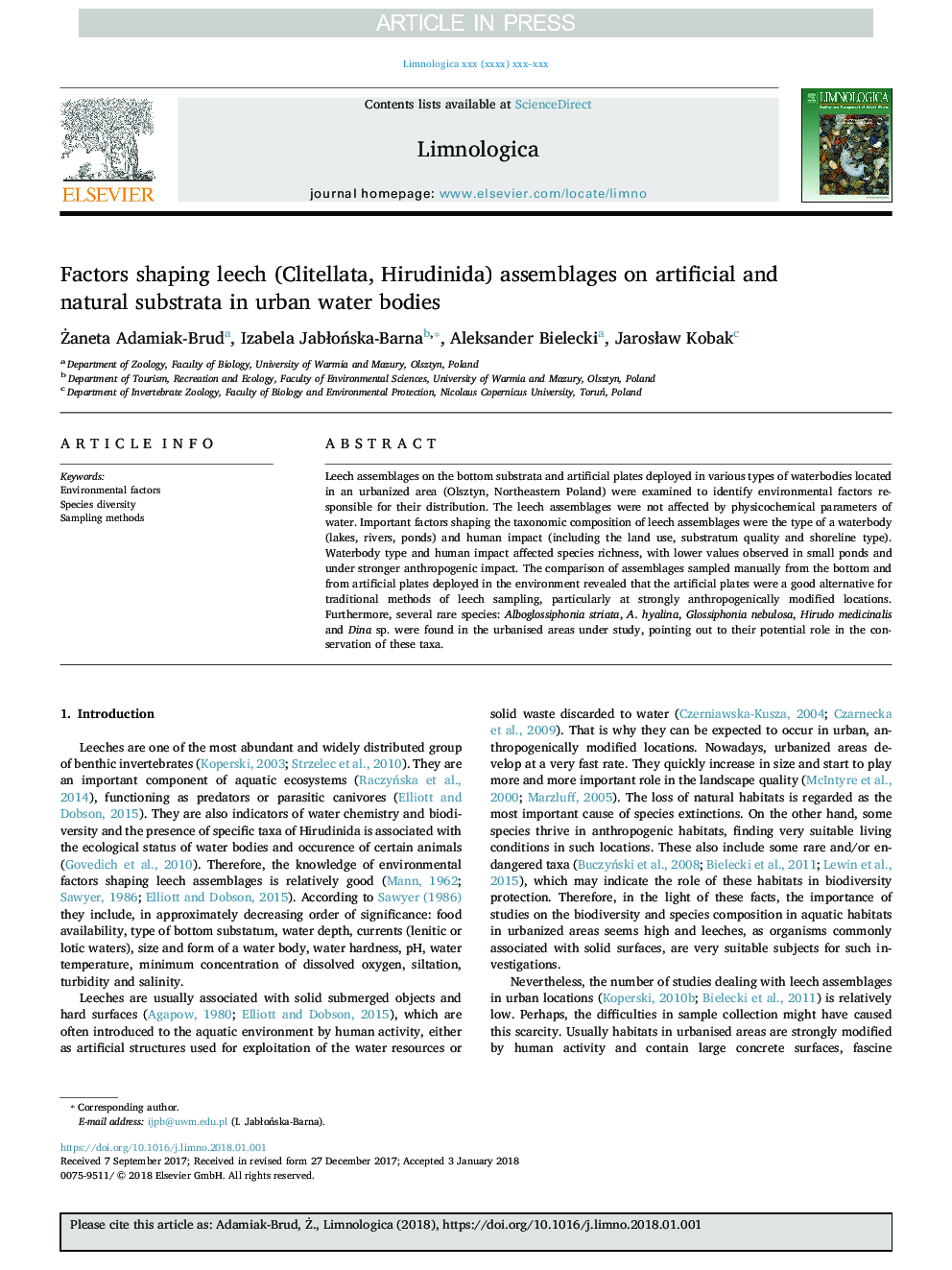| Article ID | Journal | Published Year | Pages | File Type |
|---|---|---|---|---|
| 8849400 | Limnologica - Ecology and Management of Inland Waters | 2018 | 10 Pages |
Abstract
Leech assemblages on the bottom substrata and artificial plates deployed in various types of waterbodies located in an urbanized area (Olsztyn, Northeastern Poland) were examined to identify environmental factors responsible for their distribution. The leech assemblages were not affected by physicochemical parameters of water. Important factors shaping the taxonomic composition of leech assemblages were the type of a waterbody (lakes, rivers, ponds) and human impact (including the land use, substratum quality and shoreline type). Waterbody type and human impact affected species richness, with lower values observed in small ponds and under stronger anthropogenic impact. The comparison of assemblages sampled manually from the bottom and from artificial plates deployed in the environment revealed that the artificial plates were a good alternative for traditional methods of leech sampling, particularly at strongly anthropogenically modified locations. Furthermore, several rare species: Alboglossiphonia striata, A. hyalina, Glossiphonia nebulosa, Hirudo medicinalis and Dina sp. were found in the urbanised areas under study, pointing out to their potential role in the conservation of these taxa.
Related Topics
Life Sciences
Agricultural and Biological Sciences
Aquatic Science
Authors
Å»aneta Adamiak-Brud, Izabela JabÅoÅska-Barna, Aleksander Bielecki, JarosÅaw Kobak,
